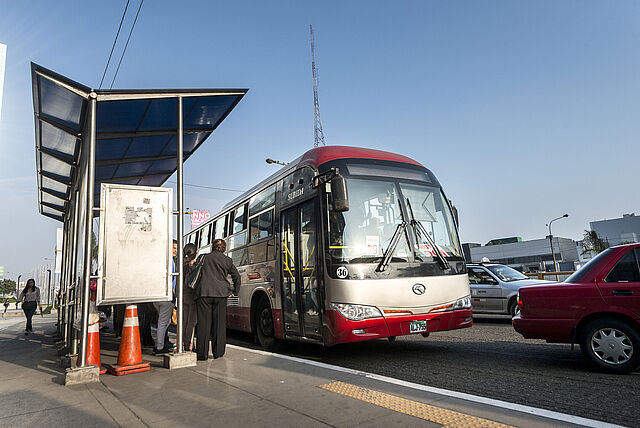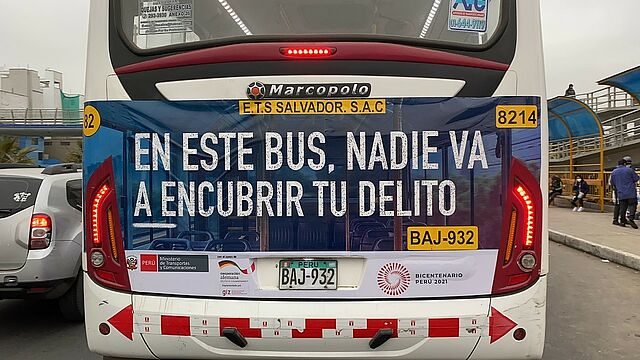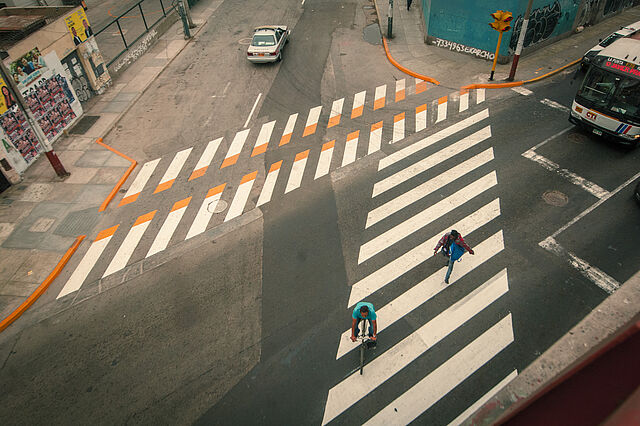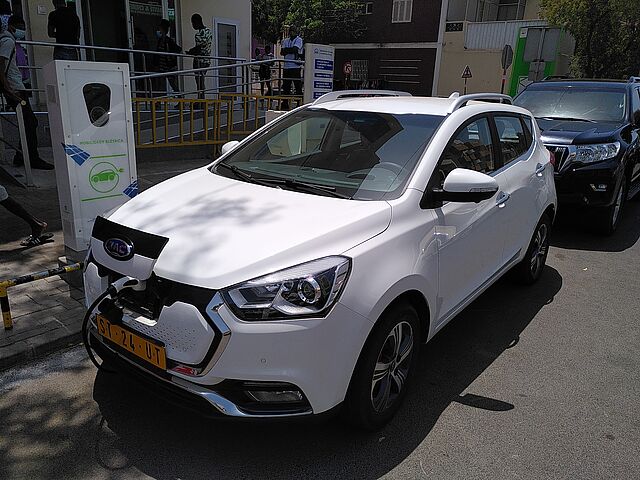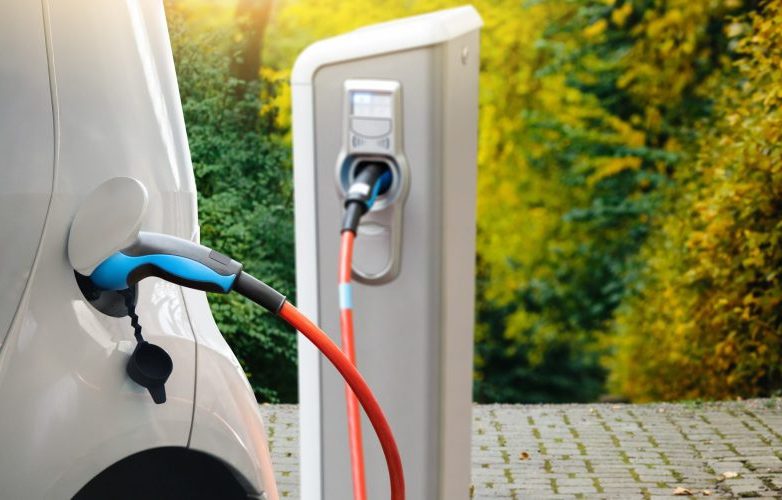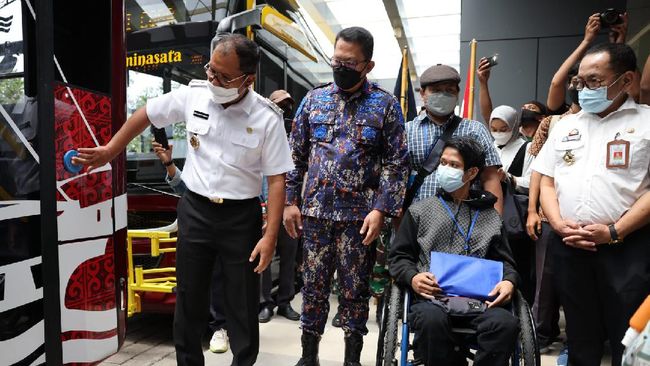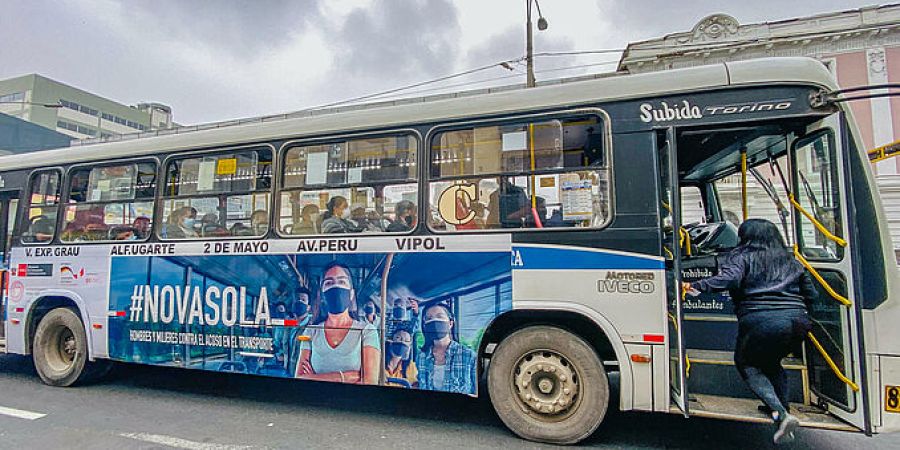
Background: The Government of Peru developed the Sustainable Urban Transport (SUT) project to halt the trend towards urban sprawl dominated by cars and afflicted by serious traffic jams [1], poor road safety and low air quality. The project rests on two building blocks: high quality public transport provision and vehicle fleet optimisation. Progress in these areas requires several changes: 1) a better policy framework (e.g., fuel economy standards); 2) additional infrastructure (e.g., metro lines, cycle lanes); and 3) a strong institutional set-up (e.g. dedicated transport authority for Lima/Callao).
A policy matrix will drive this vision through, integrating the partners’ common agenda in a structured way to allow rigorous transformation. It consists of six major approaches to emission reduction: 1) integrated mass public transit system in the metropolitan area of Lima; 2) non-motorised transport; 3) Institutional set-up for urban transport management; 4) control and mitigation of greenhouse gas (GHG) emissions and local pollutants from motor vehicles; 5) modernisation of the public transport motor vehicle fleet; and 6) support to local authorities on sustainable urban transport.
Approach to Transformational Change: The project “Peru – Sustainable Urban Transport” (also known as TRANSPerú) is essential to successfully implementing mitigation action, as it creates a solid basis for follow-up measures by designing and driving through key structural change. It provides closely linked financial and technical support in three areas:
- Coordination: steering committee coordination with donors as well as between institutions (GIZ / KfW to act as Technical Secretariat);
- Mitigation: implementation of selected points in the policy matrix at national and sub-national level;
- Measurement, reporting and verification (MRV): setting up the MRV system in collaboration with other relevant institutions.
Mitigation potential: GHG emissions are to be reduced by at least 2.2 million tonnes CO2 between 2012 and 2022 to 4.3 million tonnes CO2 compared to business as usual.


